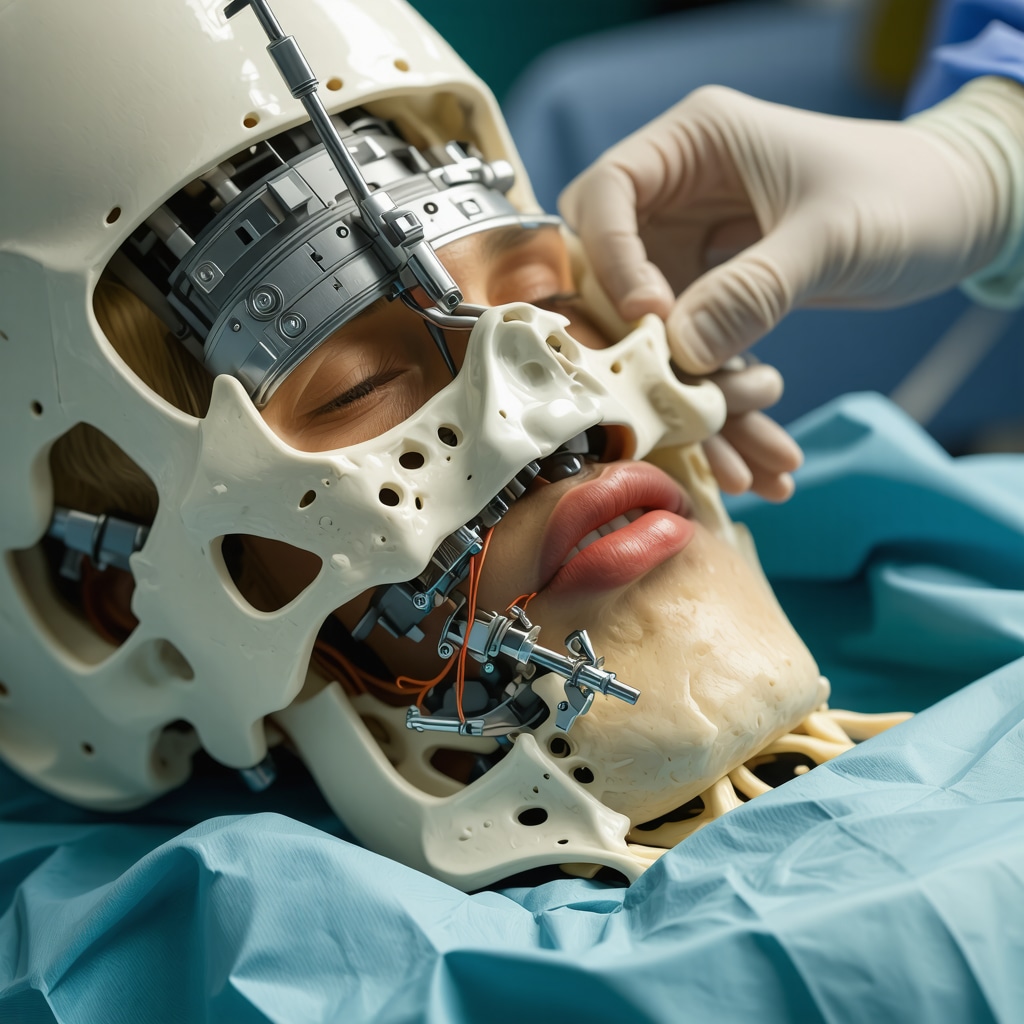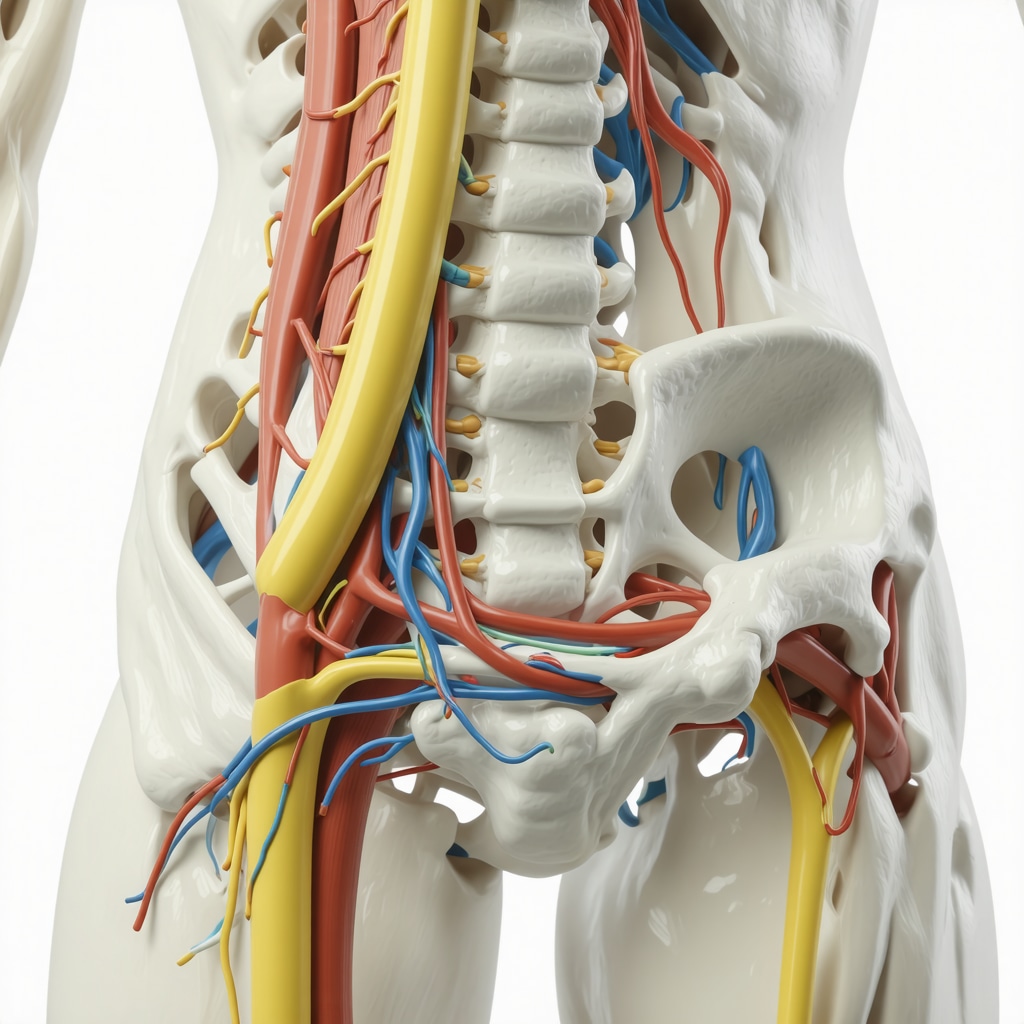Let’s Talk ALIF: A Front-Row Seat to Spine Surgery’s Hidden Star
Imagine your spine as a towering stack of blocks, each one vital to your daily motion and comfort. Now, what if one of those blocks starts misbehaving, causing relentless back pain or mobility issues? Enter ALIF spine surgery, a procedure that’s making waves in New Jersey for its direct approach to lumbar problems. But what exactly is ALIF, and why are NJ surgeons buzzing about it?
ALIF: More Than Just an Alphabet Soup
ALIF stands for Anterior Lumbar Interbody Fusion — a mouthful that means the surgeon accesses your lumbar spine from the front (yes, your belly side, not the back!). This approach lets surgeons work around critical structures more delicately, replacing damaged discs with bone grafts or implants to fuse vertebrae and restore stability.
Why choose the front door? Isn’t the back easier to reach?
Great question! While posterior spinal surgeries are common, the anterior route offers distinct advantages. By approaching from the front, surgeons avoid disrupting the powerful back muscles and ligaments, potentially leading to less post-op pain and quicker recovery. Plus, it provides a larger workspace to place the graft or implant precisely where it’s needed.
The NJ Surgeons’ Perspective: Who’s a Candidate?
From my conversations with spine specialists in New Jersey, ALIF is often recommended for patients with degenerative disc disease, spondylolisthesis, or chronic lower back pain not relieved by conservative treatments. It’s not a one-size-fits-all, though. Surgeons weigh factors like patient anatomy, overall health, and surgical goals before saying “go.”
Interestingly, some NJ patients find ALIF preferable to posterior approaches due to reduced muscle trauma and the option for minimally invasive techniques. For those curious about the signs pointing to surgical intervention, NJ experts offer insightful guidance here.
What Happens During ALIF Surgery? The Insider Scoop
The procedure usually starts with a small incision in the lower abdomen. Surgeons carefully navigate around major blood vessels and organs — a feat requiring precision and expertise. Once at the spine, the damaged disc is removed, and a spacer packed with bone graft material is inserted between the vertebrae. This spacer encourages new bone growth, eventually fusing the segment into a solid unit.
Recovery times vary, but patients often report noticeable relief from nerve compression and pain within weeks. Of course, as with any surgery, risks exist, and patients should discuss these thoroughly with their NJ spine surgeon, who can also elaborate on alternatives like minimally invasive spine surgery options.
Is ALIF the silver bullet for all lumbar spine woes?
While ALIF offers remarkable benefits, it’s not a universal cure. Patient-specific factors and surgeon experience dramatically influence outcomes. It’s wise to consult multiple experts and consider all options before diving into surgery. The [American Academy of Orthopaedic Surgeons](https://orthoinfo.aaos.org/en/treatment/anterior-lumbar-interbody-fusion-alif/) provides excellent resources for those hungry for more detailed, reliable information.
If you’re navigating the maze of spine surgery decisions, why not start a conversation? Share your experiences or questions below — your story might be the key that unlocks someone else’s path to relief.
ALIF Surgery: Navigating the Intricacies of Anterior Access
While ALIF presents clear benefits over traditional posterior approaches, the anterior route is not without challenges. The need to carefully maneuver around major blood vessels, such as the iliac arteries and veins, demands impeccable surgical precision and thorough preoperative imaging. NJ spine surgeons often employ advanced techniques like intraoperative navigation and neuromonitoring to minimize risks and enhance safety during these complex procedures.
Moreover, the anterior approach allows for better restoration of lumbar lordosis, which is crucial in maintaining spinal balance and reducing adjacent segment degeneration. This biomechanical advantage is a key reason why some surgeons favor ALIF for multi-level fusions or deformity corrections.
How does ALIF compare with other lumbar fusion techniques in patient outcomes?
One of the most frequently asked questions by patients and clinicians alike concerns the comparative effectiveness of ALIF versus posterior lumbar interbody fusion (PLIF) or transforaminal lumbar interbody fusion (TLIF). According to a comprehensive meta-analysis published in the Journal of Neurosurgery: Spine, ALIF demonstrates superior restoration of disc height and sagittal alignment, with comparable fusion rates and complication profiles to PLIF and TLIF. However, the anterior approach may carry a slightly increased risk of vascular injury, underscoring the importance of surgeon expertise and patient selection.
In New Jersey, many spine centers have embraced minimally invasive ALIF techniques, which further reduce muscle disruption and postoperative pain. These advancements align with what NJ surgeons have shared about the trend toward less invasive yet highly effective lumbar fusion surgeries.
Patient-Centered Decisions: Balancing Risks and Rewards
Choosing ALIF involves a nuanced evaluation of patient-specific factors such as age, bone quality, comorbidities, and anatomical considerations. For example, patients with prior abdominal surgeries may not be ideal candidates due to scar tissue complicating anterior access. In such cases, alternative approaches or combined anterior-posterior surgeries might be recommended.
Additionally, postoperative rehabilitation is a critical component of successful ALIF outcomes. NJ spine experts emphasize tailored physical therapy protocols that focus on core strengthening and gradual return to activities, significantly impacting long-term functional recovery.
If you’re considering ALIF or other spine surgery options, NJ surgeons recommend consulting specialists who can provide a comprehensive assessment. For insights into minimally invasive alternatives that might suit your condition, explore these expert-reviewed options.
What emerging technologies are reshaping ALIF procedures in New Jersey?
Innovations such as robotic-assisted surgery and enhanced 3D imaging are revolutionizing how ALIF is performed. Robotic platforms can improve implant placement accuracy, reduce operative times, and enhance overall safety — trends increasingly observed in NJ spine surgery centers. For a deeper dive into these cutting-edge techniques, consider reviewing this detailed analysis by leading NJ experts.
Ultimately, the choice of surgical approach should be a collaborative decision, informed by the latest evidence, surgeon expertise, and patient preferences.
Have you had experience with ALIF or other lumbar fusion surgeries? Share your story or questions in the comments below — your insights could guide someone else facing similar decisions. And if you want to learn about different spine surgery techniques gaining traction in 2024, check out our expert-curated overview here.
Beyond Basics: Advanced Surgical Nuances Elevating ALIF Outcomes
While anterior lumbar interbody fusion (ALIF) already stands as a sophisticated spine surgery, the continuous refinement of surgical techniques and perioperative strategies in New Jersey’s top centers pushes this procedure into a new realm of precision and efficacy. For instance, the integration of enhanced preoperative vascular imaging — such as CT angiography — allows surgeons to meticulously map out the vascular anatomy unique to each patient, dramatically mitigating risks associated with anterior approaches. This is particularly vital given the close proximity of the iliac vessels, whose inadvertent injury can lead to serious complications.
Moreover, the evolution of interbody implant materials has expanded beyond traditional titanium and PEEK (polyetheretherketone) cages. Emerging bioactive and 3D-printed porous implants now facilitate better osteointegration and mimic the native bone’s mechanical properties, fostering more robust fusion. NJ surgeons who have embraced these technologies report promising improvements in fusion rates and patient-reported outcomes.
Precision Perks: The Role of Robotics and Navigation in ALIF
Robotic-assisted ALIF surgery is swiftly gaining traction. By combining preoperative planning software with intraoperative robotic guidance, surgeons achieve unparalleled accuracy in implant placement and minimize unintended tissue disruption. This technological leap also translates into shorter operative times and reduced radiation exposure for both patients and surgical teams.
Complementing robotics, real-time neuromonitoring during ALIF procedures serves as a sentinel for nerve integrity, alerting surgeons to potential neural compromise before irreversible damage occurs. NJ spine centers often bundle these technologies to create a hybrid operating environment that epitomizes patient safety and surgical precision.
How do robotic-assisted ALIF outcomes compare to traditional methods in complex cases?
Recent peer-reviewed studies, including a 2023 publication in The Spine Journal, demonstrate that robotic-assisted ALIF yields comparable or superior clinical outcomes in multi-level and deformity correction cases, with fewer perioperative complications. Particularly in anatomically challenging patients, the robotic platform’s precision aids in avoiding vascular and visceral injuries, which historically posed notable risks in open anterior approaches.
Patient-Centric Innovations: Tailoring ALIF for Optimal Recovery
Beyond the operating room, NJ experts emphasize personalized perioperative care pathways. Enhanced Recovery After Surgery (ERAS) protocols — incorporating multimodal analgesia, early mobilization, and nutritional optimization — have been adapted specifically for ALIF patients. These protocols not only reduce hospital length of stay but also accelerate the return to functional independence.
Furthermore, patient education leveraging virtual reality and 3D anatomical models empowers individuals to understand their surgical plan and recovery process, fostering realistic expectations and better compliance with rehabilitation regimens.
Integrating ALIF Into Multimodal Spine Care Strategies
ALIF is increasingly viewed not as an isolated intervention but as part of a comprehensive spine care continuum. For example, combining ALIF with lateral or posterior supplemental fixation can address complex instability while minimizing overall invasiveness. NJ surgeons often discuss these hybrid strategies in multidisciplinary spine conferences, ensuring tailored and evidence-based plans.
Additionally, advances in biologics, such as bone morphogenetic proteins (BMPs), are being investigated as adjuncts to enhance fusion quality in ALIF procedures. However, their use requires careful patient selection due to potential adverse effects, underscoring the need for expert judgment.

What are the latest advancements in biologic augmentation for ALIF, and how do they impact fusion success?
Biologic augmentation represents a frontier in spine surgery, aiming to improve fusion rates and reduce recovery times. Recent clinical trials highlight novel osteoinductive agents and stem cell therapies combined with traditional bone grafts showing promise in accelerating spinal fusion. According to a 2024 review in The Journal of Orthopaedic Research, these biologics may be particularly beneficial in patients with compromised bone quality, such as osteoporosis, a common concern in the aging NJ population.
That said, widespread adoption awaits further long-term data confirming safety and efficacy. Patients considering ALIF should engage in detailed discussions with their spine surgeon about the potential role of biologics tailored to their unique clinical profile.
Curious about whether ALIF or an alternative fusion technique best suits your spine condition? Consult with a NJ spine specialist who can provide a nuanced evaluation incorporating these cutting-edge advancements. Your journey toward spine health deserves the most informed and personalized approach — don’t hesitate to reach out and explore the options with expert guidance.
Unlocking New Frontiers: The Intricacies of ALIF in Complex Lumbar Cases
Anterior Lumbar Interbody Fusion (ALIF) continues to evolve beyond its foundational role, particularly in treating complex spinal pathologies that challenge traditional surgical paradigms. In New Jersey, spine surgeons are pushing the boundaries by integrating hybrid approaches and leveraging advanced technology to address multi-level degenerative conditions and deformities with increased precision.
One noteworthy advancement is the strategic combination of ALIF with posterior percutaneous fixation. This hybrid modality offers enhanced biomechanical stability while minimizing soft tissue trauma, a balance crucial for patients with severe instability or osteoporosis. Surgeons emphasize preoperative planning tailored to each patient’s unique anatomy, often utilizing 3D reconstructions to anticipate vascular and bony landmarks.
How is vascular risk minimized during ALIF in anatomically challenging patients?
Given the anterior approach’s proximity to critical vessels like the iliac arteries and vena cava, vascular injury is a paramount concern. NJ spine specialists mitigate these risks through meticulous preoperative vascular imaging, employing CT angiography to delineate aberrant vessel courses. Intraoperatively, the use of neuromonitoring and real-time navigation systems aids in avoiding inadvertent trauma. According to a 2023 study published in The Spine Journal, centers that incorporate these multimodal safeguards report a significant reduction in vascular complications, underscoring the critical role of technology and experience.
Additionally, involvement of a vascular surgeon during high-risk cases is becoming a best practice in NJ institutions, enhancing intraoperative safety and immediate management of unexpected hemorrhage.
Personalized Postoperative Pathways: Enhancing Recovery and Long-Term Function
Recovery from ALIF is no longer a one-size-fits-all process. NJ spine centers now champion individualized postoperative care plans that blend early mobilization, targeted physiotherapy, and nutritional optimization. Enhanced Recovery After Surgery (ERAS) protocols have been adapted specifically for anterior fusion patients, focusing on multimodal pain control to reduce opioid dependency.
Furthermore, telemedicine follow-ups and wearable activity monitors are emerging as valuable tools to track patient progress and adjust rehabilitation in real time, ensuring adherence and identifying early signs of complications.
What role do emerging biologics play in optimizing ALIF fusion success?
Biologic augmentation in ALIF—such as bone morphogenetic proteins (BMPs) and autologous stem cell therapies—has garnered significant interest. A 2024 review in The Journal of Orthopaedic Research highlights promising data showing enhanced osteoinduction and accelerated fusion rates, especially in patients with compromised bone quality. However, experts caution that the judicious use of biologics remains essential due to potential inflammatory responses and cost considerations.
Patients in New Jersey contemplating ALIF should discuss with their surgeons the potential benefits and risks of these biologic options within the context of their individual clinical picture.
Exploring Multimodal Treatment Ecosystems in Spine Care
ALIF is increasingly integrated into comprehensive spine care strategies that include non-surgical treatments and adjunctive therapies. NJ specialists recommend evaluating all conservative options before surgery and considering ALIF as part of a broader, multidisciplinary approach—often involving pain management, physical therapy, and psychological support.
For patients seeking deeper understanding of their surgical options or the nuances of minimally invasive spinal fusion, the resource exploring minimally invasive spine surgery benefits offers expert perspectives tailored to New Jersey’s patient population.
Ready to dive deeper or have specific questions about ALIF and lumbar spine care? Engage with us by sharing your experiences or queries via the contact page. Your insights could illuminate the path for others navigating complex spine health decisions.

Expert Insights & Advanced Considerations
Robotic-Assisted ALIF Enhances Precision and Safety
The integration of robotic platforms in ALIF surgeries has revolutionized implant placement accuracy, particularly in complex multi-level or deformity correction cases. New Jersey surgeons report that robotics not only reduce operative time but also markedly decrease vascular and neural complications, elevating patient safety standards.
Preoperative Vascular Imaging Is Indispensable
Given the anterior lumbar approach’s proximity to critical vessels like the iliac arteries and vena cava, meticulous preoperative CT angiography mapping is crucial. This imaging allows personalized surgical planning, significantly minimizing intraoperative vascular risks and improving outcomes.
Biologic Augmentation Shows Promise but Requires Judicious Use
Emerging biologics such as bone morphogenetic proteins (BMPs) and stem cell therapies enhance osteoinductive potential and fusion rates, especially in patients with compromised bone health. However, experts urge a tailored approach, balancing benefits against potential inflammatory responses and cost considerations.
Multimodal Recovery Protocols Accelerate Functional Return
Enhanced Recovery After Surgery (ERAS) pathways, combining multimodal analgesia, early mobilization, and nutritional optimization, are now standard in NJ centers. These personalized protocols reduce hospital stays and opioid reliance while facilitating faster, more durable recoveries post-ALIF.
Hybrid Surgical Strategies Optimize Complex Lumbar Pathologies
Combining ALIF with posterior percutaneous fixation offers superior biomechanical stability with minimal soft tissue disruption. This hybrid approach is particularly valuable for patients with severe instability or osteoporosis, underscoring the importance of multidisciplinary preoperative planning and 3D anatomical modeling.
Curated Expert Resources
- American Academy of Orthopaedic Surgeons (AAOS) – Provides authoritative guidance on anterior lumbar interbody fusion and comprehensive musculoskeletal care, invaluable for deep clinical understanding. Visit AAOS
- The Spine Journal – Publishes peer-reviewed studies on advanced spine surgery techniques, including robotic-assisted ALIF outcomes and vascular risk mitigation strategies. Explore The Spine Journal
- Journal of Orthopaedic Research – Features cutting-edge research on biologic augmentation and fusion enhancement technologies critical to ALIF surgical innovation. Access the Journal
- NJ Spine Surgeons Online: Minimally Invasive Spine Surgery Benefits – Expert-curated resource detailing minimally invasive alternatives and recovery benefits, tailored to NJ patients. Read More
- NJ Spine Surgeons Online: Robotic-Assisted Spine Surgery Future or Fad – Insightful analysis of robotic technologies shaping spine surgery in New Jersey. Learn More
Final Expert Perspective
Anterior Lumbar Interbody Fusion (ALIF) represents a dynamic and evolving frontier in lumbar spine surgery, especially within New Jersey’s advanced surgical centers. The procedure’s nuanced balance of biomechanical restoration, precision-enhancing technologies, and patient-centered recovery protocols collectively redefine what patients can expect from lumbar fusion. While not a universal remedy, ALIF’s tailored application—leveraging robotic assistance, sophisticated imaging, biologic augmentation, and multimodal rehabilitation—offers compelling benefits for appropriately selected candidates.
For those navigating the complexities of lumbar spine care, embracing this comprehensive and expert-guided approach is paramount. I encourage readers to explore further, ask nuanced questions, and share their experiences to foster a richer understanding within our community. Discover more about recognizing surgical indications at signs you might need spinal surgery or delve into minimally invasive options here. For personalized guidance, don’t hesitate to reach out via our contact page—your spine health journey deserves expert partnership.


I found this post incredibly thorough and highlighting just how advanced ALIF procedures have become, especially here in NJ. As someone who’s considering spine surgery options, I was particularly interested in how minimally invasive techniques, including robotic assistance, are making a difference. It’s reassuring to see the emphasis on patient safety and recovery protocols like ERAS, which can really enhance outcomes.
That said, I’m curious about the long-term success rates — how durable are the fusion results with bioactive or 3D-printed implants compared to traditional materials? I’d love to hear from anyone who’s undergone ALIF with these new technologies and their experience in terms of fusion longevity and functional recovery. Also, how do NJ surgeons recommend balancing emerging biologics with potential risks?
Overall, does anyone have advice on how to prepare mentally and physically for this type of surgery? Thanks for sharing such valuable insights on this evolving procedure!